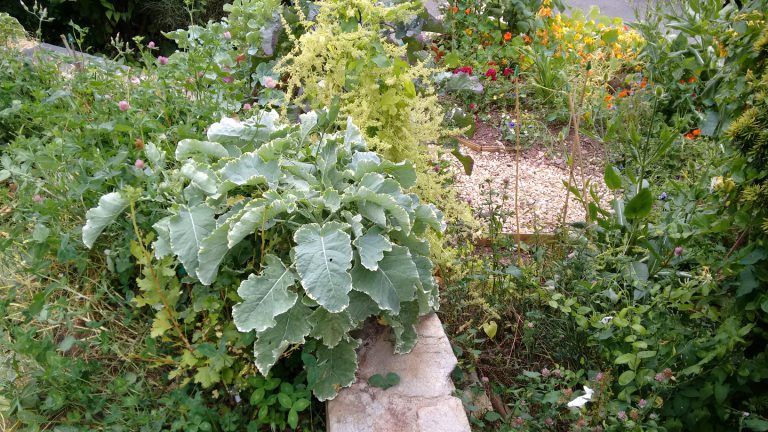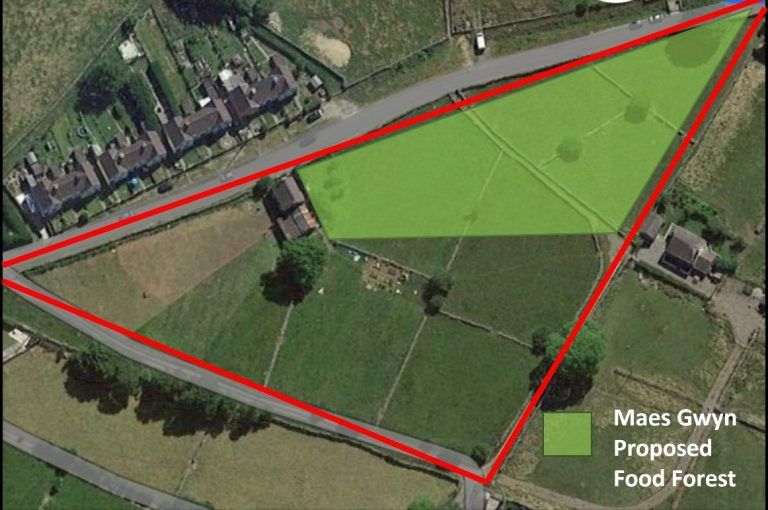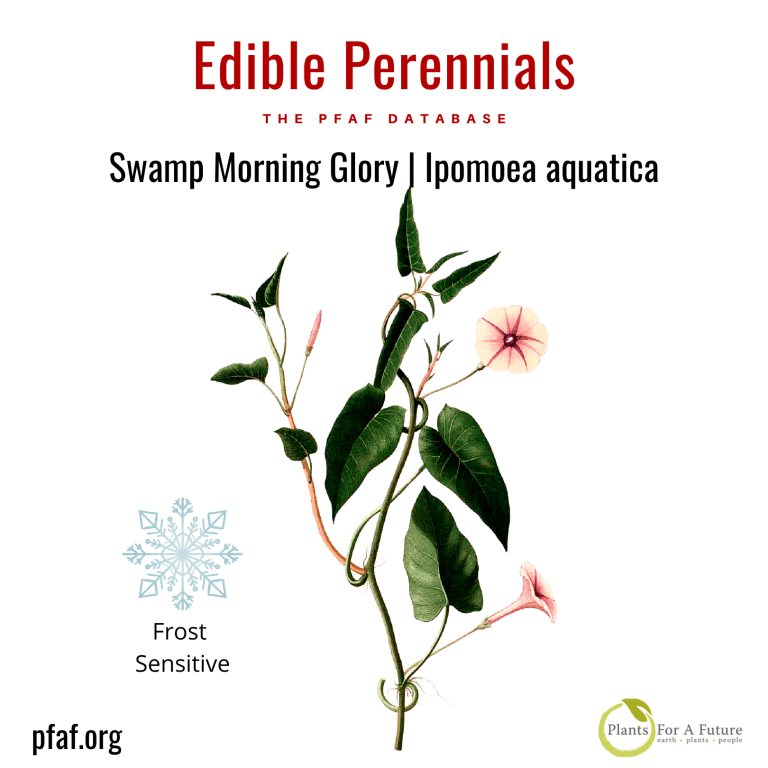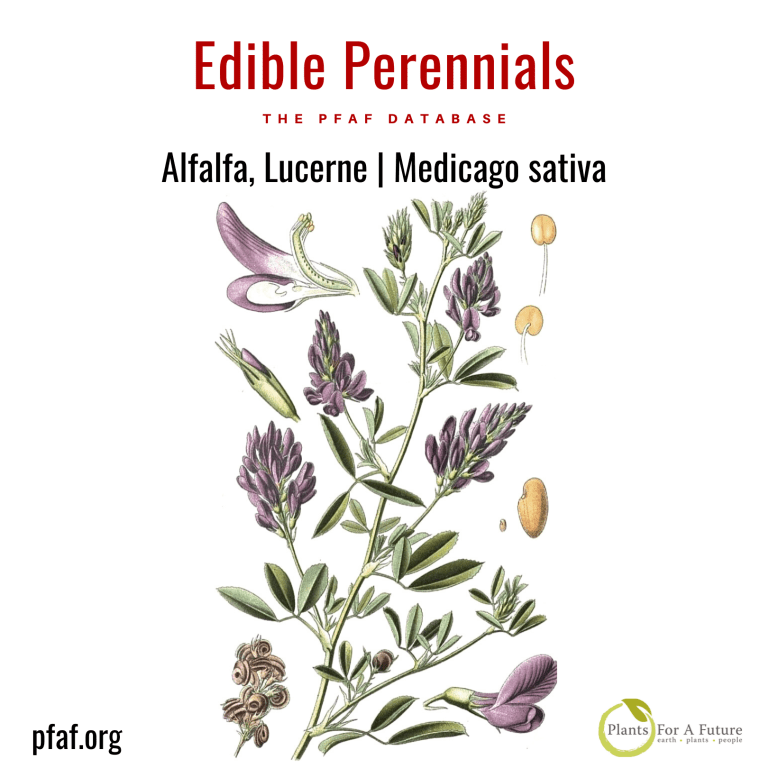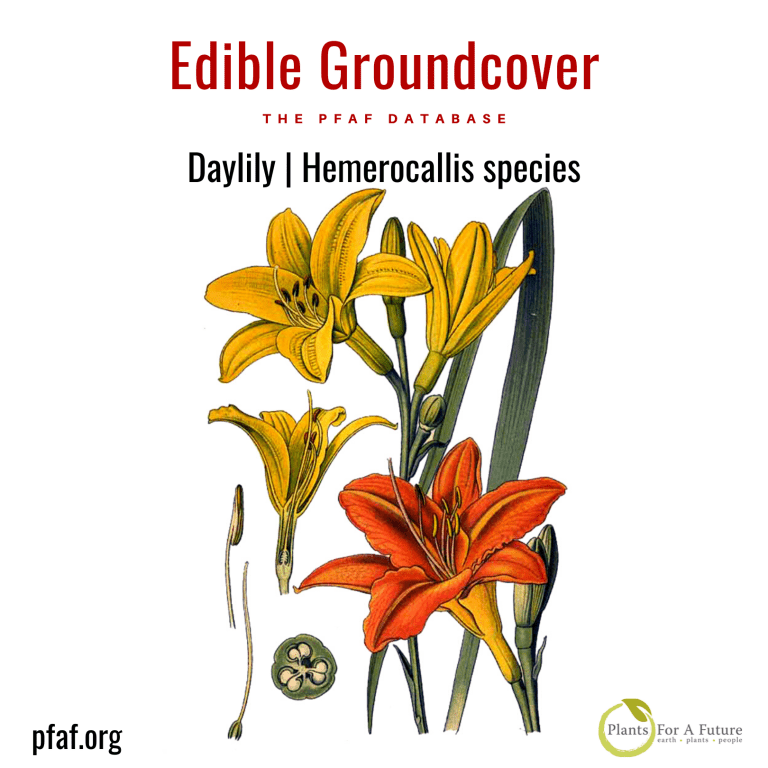Chris Marsh and David Gearing have been associated with the Plants For A Future (PFAF) charity for 14 years, Chris as Managing Trustee and Treasurer, with David providing vital support. They have both been involved with permaculture since 1990 and are keen gardeners. Their garden in Woking, Surrey was one of the 86 plots in the 1996 edition of The Permaculture Plot: The Guide to Permaculture in Britain.
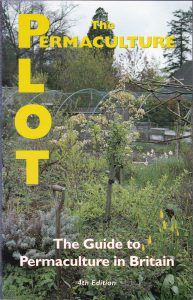
This was an ordinary suburban garden transitioning towards a mini-forest garden, producing a wide variety of fruit, vegetables and herbs, also compost/mulch/ground-cover plants such as comfrey, phacelia, mustard and field beans, and decorative/edible/pest-discouraging flowers like marigolds and nasturtiums.
When we moved to Devon in 1999 it was to a house and garden on a steep slope with views of the sea. (9 Priory Park Road, Dawlish EX7 9LX is the address of PFAF charity, pictures taken here indicated below as ‘PP’.)
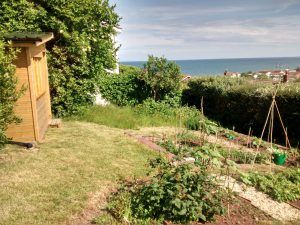
It has been a challenging site, and over the years we have experimented with windbreaks, and introduced terracing and other infrastructure, for the sake of the crops and to make adjustments to our capabilities as we became less agile and energetic with age. Two years ago we began a new scheme in an area created by removing an old magnolia tree. We employed local craftsmen to build retaining walls of local stone to make two level beds, one with a large pond. Soil had to be imported and we initially planted clover and phacelia, and scattered patches of leftover seeds including squashes and sunflowers. The result in the spring and summer was glorious, if a bit wacky (PP).
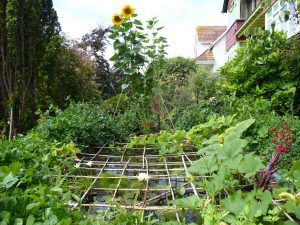
We intended this new area to be primarily for edible perennials. This idea was prompted by two activities at PFAF in 2016: a new book on Edible Perennials featuring 50 plants from the database, and a series of visits with fellow trustee Wendy Stayte to sites in Devon with diverse mixed plantings such as forest gardens. One of the sites we went to was Mandy Barber’s Incredible Vegetables (link) (‘IV’) near Ashburton. We took notes and photos and published a photo-essay on the PFAF blog (https://pfaf.org/plants/incredible-vegetables/ ). We were impressed to learn that Mandy has almost all the plants featured in Edible Perennials growing on her site. The IV site is gorgeous and inspiring and we have returned several times, and Mandy has visited our own garden, and we have quite a number of her plants growing in our new beds.
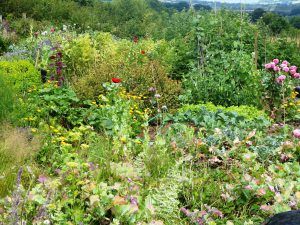
This year (2019) David and I returned to IV on 9 July to consult Mandy on our experience with her plants – and of course to enjoy being there amongst the riotous growth of unusual edible plants and largely self-seeded flowers. What follows is notes from our discussion and photos of the plants concerned, both our own specimens and the equivalent on Mandy’s plot.
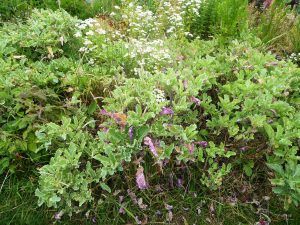
This is an 8 year old plant of Daubenton’s variety of perennial kale (https://pfaf.org/user/Plant.aspx?LatinName=Brassica+oleracea+ramosa ) [IV]
We have a number of these ourselves including a Panache variegated variety. They grow vigorously, are tasty and pretty too [PP].
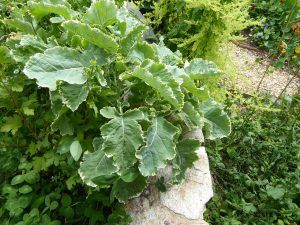
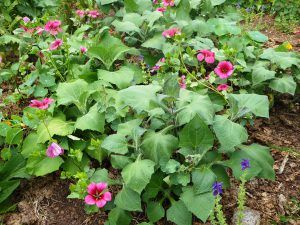
This is a Yacon (https://pfaf.org/user/plant.aspx?LatinName=Polymnia+edulis ) with Malope Trifida flowers growing through it. The mulch around the plants is coffee chaff. [IV]
We had two Yacon plants last year which grew enormous and then apparently died, but this is what they do.
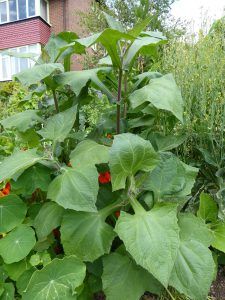
They came up again this spring and have grown very big again. [PP] Mandy advised us to lift the big storage tubers this time when the tops die back. They are juicy with a pear-like taste when ripened on the windowsill. Then we were advised that we should save the top with the knobbly rhizomes and the base of the stem as a big crown in a bucket of sandy compost.

These are Machua (https://pfaf.org/user/plant.aspx?LatinName=Tropaeolum+tuberosum ) [IV]. We had a Machua plant last year but it didn’t survive despite careful nurturing. It was at the corner of the new bed beside our vigorous Nine-Star Broccoli which probably overwhelmed it.
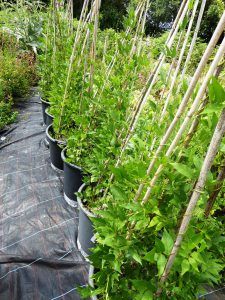
These are two types of Apios Americana (https://pfaf.org/user/plant.aspx?latinname=Apios+americana ) at IV from a rare collection, third generation tubers. They are planted in rows between the polytunnels to keep them away from cross fertilisation from other plants.
Last year we planted four Apios Americana together in a very big, bottomless pot and they did really well. [PP]
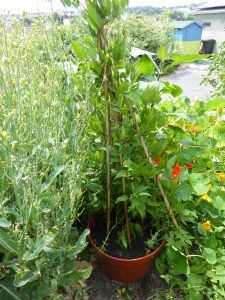
They produce edible tubers which you harvest when the vine dies back at the end of the year. As this is their second year, Mandy advised us to tip them out of the pot, saving the largest tuber to replant.
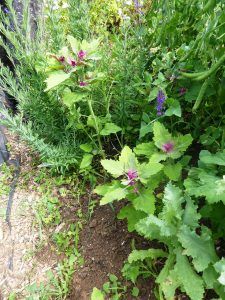
Unlikely as it may seem, these delicate little plants are giant tree spinach (https://pfaf.org/User/Plant.aspx?LatinName=Chenopodium+giganteum ), self-sown. [IV]
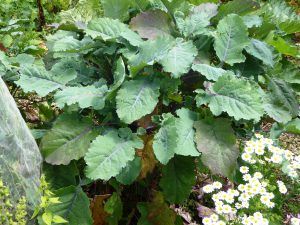
This is a Daubenton’s kale cross with tree collard. [IV]
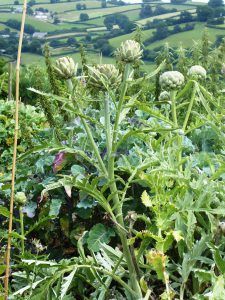
These are globe artichokes (https://pfaf.org/user/Plant.aspx?LatinName=Cynara+scolymus ) with a view of the landscape of IV in the background.

Here is a globe artichoke in flower, so beautiful that Mandy hasn’t wanted to eat it. [IV]
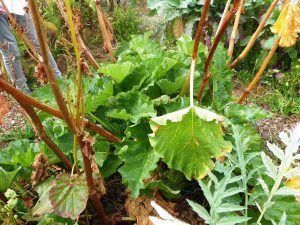
This rhubarb looks unusual because it has flower spikes. [IV]
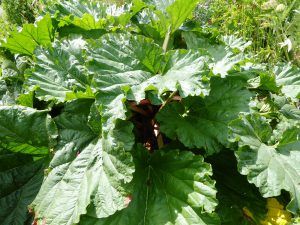
This giant rhubarb at IV featured in an earlier visit with Wendy Stayte. Our own rhubarb did really well this year after a slow start.
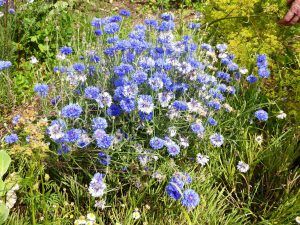
These are cornflowers sown last year at IV.
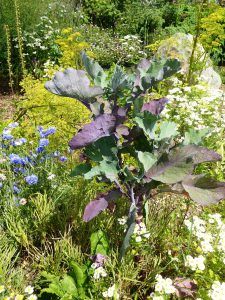
These are Portuguese tree cabbage from cuttings made this year at IV.
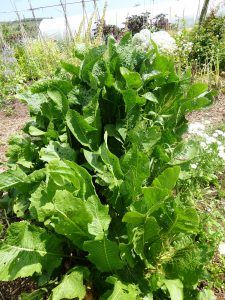
Horseradish [IV]. I associate horseradish sauce with beef and I’m vegan, but apparently it’s easy to prepare and great with all sorts of vegan dishes.
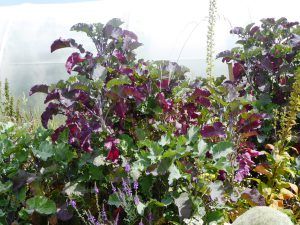
These are magnificent purple tree collards [IV]. They grow to 2 metres and live for 20 years. I think we have one in our garden [PP].
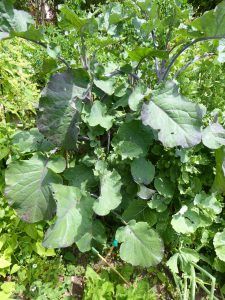
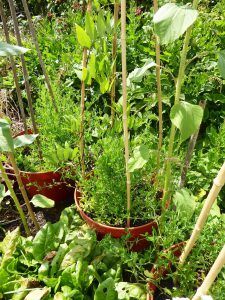
This is Earthnut Pea [IV] (Aardaker in Netherlands), Lathyrus tuberosus (https://pfaf.org/user/plant.aspx?LatinName=Lathyrus+tuberosus ) or tuberous sweetpea – with Apios growing up it.

This is Good King Henry [IV] (https://pfaf.org/user/plant.aspx?latinname=Chenopodium+bonus-henricus ). Mandy gave us a plant in April but it is swamped by our forest of sunflowers and nasturtiums. [PP]
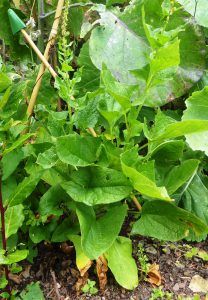
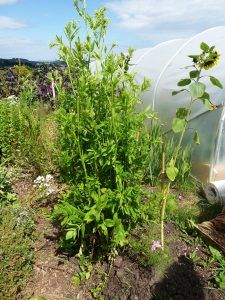
This is skirret [IV] (https://pfaf.org/user/plant.aspx?LatinName=Sium+sisarum ), one of Mandy’s 10 favourite perennial edibles. She regularly gives talks to gardening groups and I wrote up the one she gave to Teign Estuary Transition Group. (https://pfaf.org/plants/spreading-the-food-forests-revolution-with-edible-perennials/ )
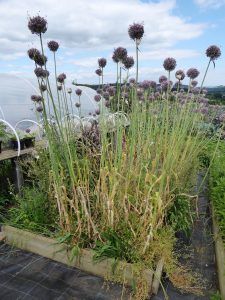
This is Poireau perpétuel perennial leek [IV]. We bought a pack of 10 bulbils from the IV shop and they produced tall thin fragile wisps of growth [PP].

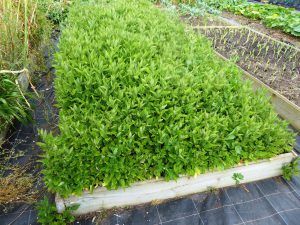
This is a fine bed of Chinese artichokes [IV] (https://pfaf.org/user/plant.aspx?LatinName=Stachys+affinis ). We bought a pack of 20 seed tubers from IV and planted them out. They survived our voracious weeds with help [PP].
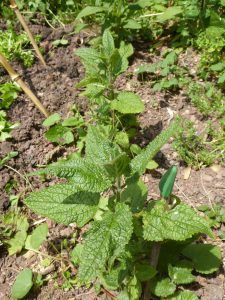

This is Hablitzia tamnoides [IV] (https://pfaf.org/user/Plant.aspx?LatinName=Hablitzia+tamnoides ), perennial spinach, the first of Mandy’s 10 favourite perennial vegetables. We had four plants given us on earlier visits, but only one survived being moved to make way for the terracing work, and then back again [PP].
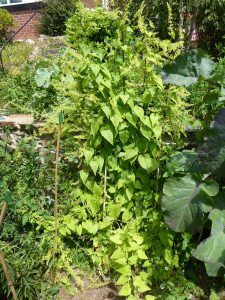
We have never had a crop from these plants as they have gone to seed almost straightaway. Mandy’s said they had too much sun and would do better in a shadier location.
This year we grew some Hablitzia from seed bought from the IV Shop. As instructed, we sowed then in trays and wrapped them in plastic bags and put in the frig for 10 days, and they germinated beautifully. [PP]
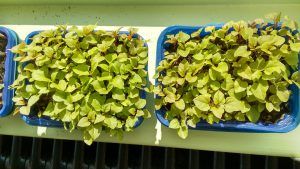
We gave the seedlings to Mandy as she needed them for a talk (in return for a Vleikos pond plant, a Good King Henry and a Kale descended from a plants from Ken Fern). A few days ago we bought two Hablitzias from Easter Hill Nursery in Starcross [PP].
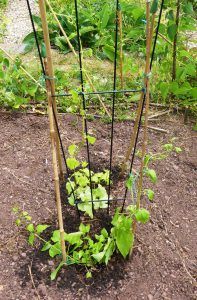

These are walking onions [IV]. We have one of these [PP].

which is not in a good location, overwhelmed by an overgrown kale and restricted by the edge of the keyhole bed we introduced for access. Mandy’s advice was to cut off the bulbs and plant elsewhere or lift and split.
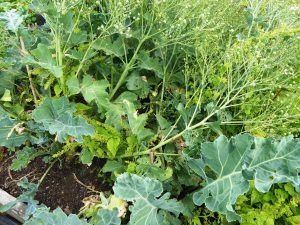
This is Sea kale [IV], which produces florets similar to broccoli.

This is Szechuan pepper [IV]. This was one of the crops planted at Dartington as part of an agroforestry project. (https://pfaf.org/plants/dartington-agroforestry-project-pfaf-visit-3-august-2017/ )
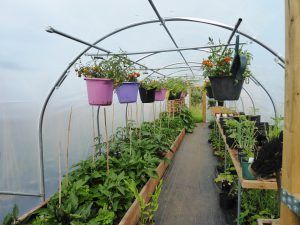
This is Skulpit or bladder campion growing in one of the polytunnels (lower left bed) [IV].
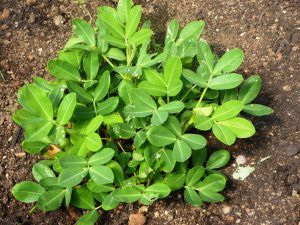
These are peanuts [IV].
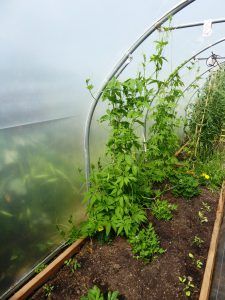
This plant produces loofah gourds [IV].
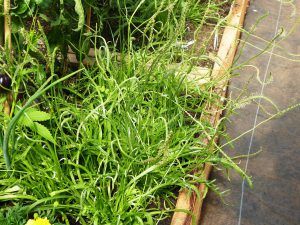
This is Achocha which produces green slipper-like fruit which can be stuffed like marrows [IV].
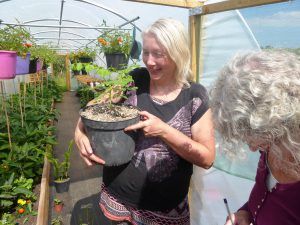
Mandy is holding a Moringa plant which is very nutritious. It is tropical and has to be kept under cover in winter.
In Conclusion
Our interest in Incredible Vegetables came about from our involvement with Plants For A Future, and discovering that the plants in our book Edible Perennials are growing in this one acre site in Devon. The PFAF database originated 30 years ago from the work of Ken Fern on his 28 acre site in Cornwall. It has become a resource for those interested in unusual useful plants around the world, and then it has, in effect, come home again to Devon in the West of England.
Curiosity inspired us to try growing some of the IV plants at 9 Priory Park Road. So far we have not got very much to eat from these new plants – though the kale is plentiful and delicious – and we know we have much to learn before we can be less reliant on the usual annual crops such as potatoes, beans, squashes and tomatoes.

